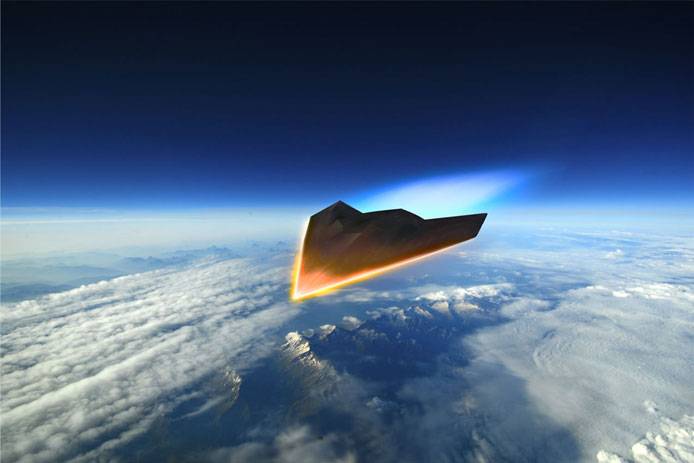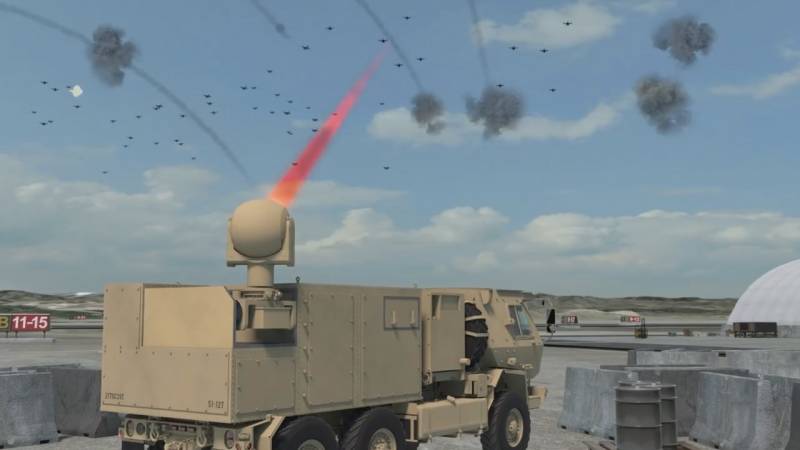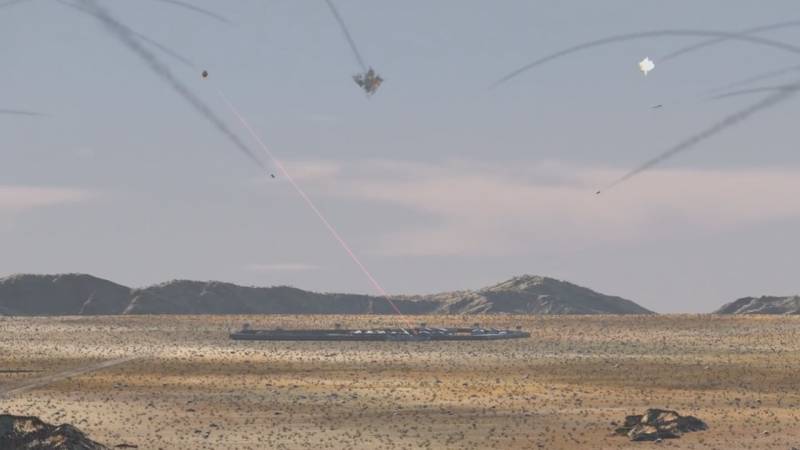Bold plans: Raytheon's laser anti-missile defense missile defense
"The next flight to the moon"
In recent months, articles on The Next Moonshots series “Next Moon Trips” have been published on the official website of Raytheon. They describe the company's future plans related to advanced technologies and fundamentally new developments. The creation of such systems is extremely complex, which is why they are compared with the American lunar program of the past.

The new material of the series is devoted to laser missile defense systems. Such systems are already being created and tested, but their developers face new challenges. Russia and China announced the emergence of promising hypersonic impact aircraft. The United States needs protection against such threats, and Raytheon should create it.
Creating a "hypersonic" laser missile defense is a particularly difficult task and requires the creation of new devices and technologies. It is necessary to solve a number of fundamentally important issues, without which the defeat of a hypersonic aircraft will be impossible. That is why such a missile defense is compared in complexity with the flight to the moon.
As an illustration of the material about the new direction led advertising video, published last fall. It demonstrated how compact laser complexes hit unguided missiles, UAVs and even a helicopter. However, this video is not directly related to the planned work and only demonstrates the general principles of dealing with air targets.
Problems and tasks
Although a promising project is similar to existing ones, its creation is associated with certain difficulties. So, modern combat lasers can literally burn unmanned aircraft. However, a much larger "number of photons" is required to hit a ballistic missile. Thus, we need some powerful sources of energy and radiation.
The laser complex needs special optical tools capable of withstanding high radiation power. Finally, all components of such a system must be placed on a suitable carrier.
This kind of missile defense system may face visibility issues. The laser beam does not bend, and therefore the range of "shooting" is physically limited by the horizon. This can reduce the maximum possible range of targets. The solution could be the placement of the laser on the spacecraft. "Fighting satellite" has advantages, but differs in complexity and high cost.
Raytheon believes that the emergence of an effective laser missile defense system can become a deterrent in the field of nuclear weapons. If the US gets a system that can deal with the enemy’s nuclear missiles with minimal effort and expenditure, the latter is unlikely to invest in its development.
Difficulties in the way
A recent article from Raytheon is of particular interest. It, at a minimum, demonstrates the desire of this company to continue the development of laser technology, including with the aim of creating means of protection against fundamentally new weapons. However, so far there is no reason to believe that Raytheon was able to move in this direction further than preliminary discussions and the search for basic solutions. Moreover, the interception of hypersonic shock LA is not even present in promotional materials.
However, Raytheon is already building and testing laser systems capable of tracking and hitting air targets. In the future, such products may be used in air defense and "traditional" missile defense. On the basis of such complexes and their technologies, it is theoretically possible to create even more developed systems capable of intercepting fundamentally new targets.
The published article lists the main difficulties encountered when creating combat lasers for air defense and missile defense. An energy source and a radiation source of sufficient power, as well as optical systems and controls are required. In the context of the fight against hypersonic aircraft, all these problems are exacerbated, and are also complemented by several characteristic difficulties.
The main factor determining the fighting qualities of a hypersonic shock system is the high speed of the aircraft. It is able to travel great distances in the shortest time, which reduces the time for the reaction from the air defense missile defense. In addition, the tracking and tracking of the target is complicated with the subsequent issuance of target designation to firing means. All this places special demands on both the detection means from the air defense and missile defense, as well as the control systems of the anti-aircraft complex.
In order to destroy an aircraft, a combat laser must transfer a certain energy to it, and difficulties also arise in this area. The first is the difficulty of pointing the laser beam at a fast-moving object and holding it for the required time. To solve such a problem, advanced means of tracking and controlling a combat laser are required. The second problem is also related to the flight characteristics of the hypersonic system. Such an aircraft is capable of unpredictable maneuvering, and laser missile defense is obliged to respond to its actions, while maintaining the tip.
The following difficulty is present in the context of energy transfer. Hypersonic aircraft must have a developed thermal protection. The laser for his defeat should be powerful enough to "penetrate" such protection. In-flight heat protection is subject to high loads, but this slightly simplifies the operation of the laser. It also depends on the laser power whether the missile defense system will have time to hit the target before it leaves the zone of responsibility.
The need to create highly effective means of detection and a powerful laser emitter adversely affects the size and mobility of the entire complex. It also turns out to be extremely difficult to manufacture and operate. However, considerable cost and considerable size are a standard problem of all existing combat lasers capable of developing the required power.
Bold plans
From a recent Raytheon article, only two main conclusions can be made. The first, one of the leading American arms manufacturers, is considering the possibility of creating new anti-aircraft and anti-missile defense systems that meet the challenges of the near future. The second conclusion is that in “Raytheon” they perfectly understand how difficult the implementation of such plans will be, and also represent what tasks will have to be solved for this.
It is curious that in parallel, Raytheon will work on the proper hypersonic impact aircraft. In particular, a few months ago in the “The Next Moonshots” column a corresponding article was published. It can be assumed that the simultaneous development of promising aircraft and means of dealing with them to some extent will facilitate obtaining the desired results in both directions.
In his article "Raytheon" directly mentions the latest developments of Russia and China. Indeed, the United States regards these countries as potential adversaries and acts accordingly. Russian and Chinese military and engineers need to consider American statements and draw the necessary conclusions. At the moment, hypersonic shock systems are invulnerable to the US defense systems, but the situation may change in the future.


Information